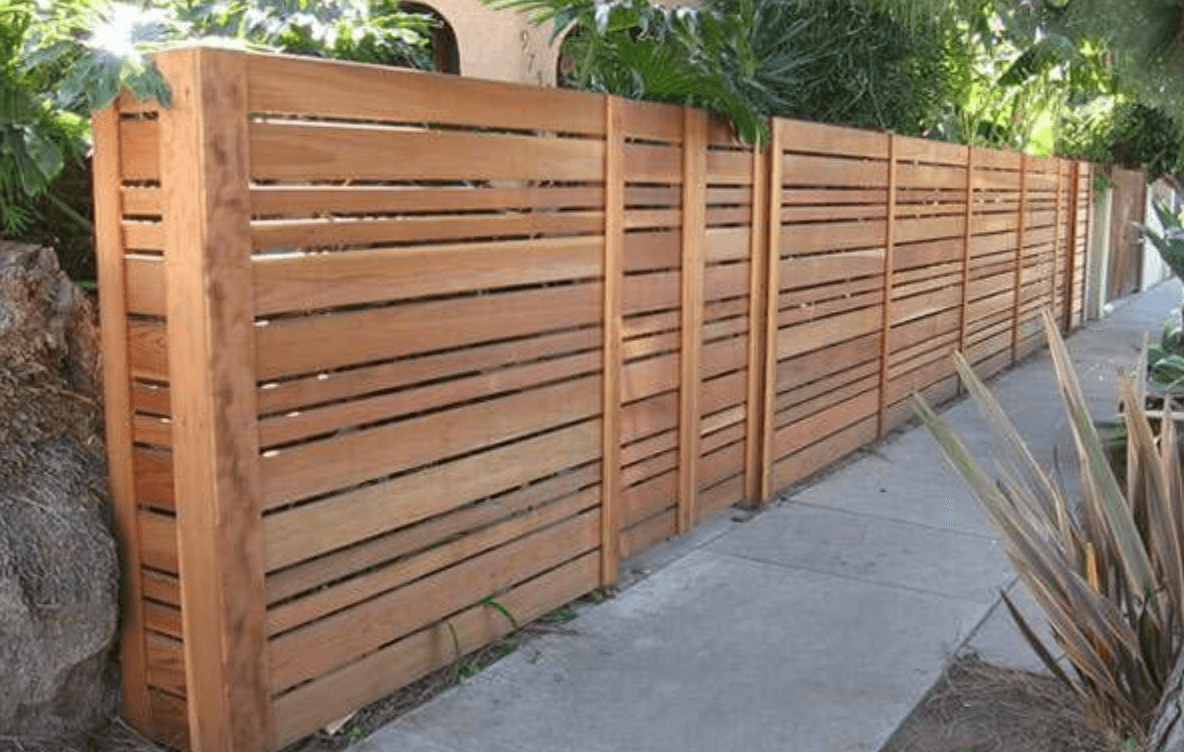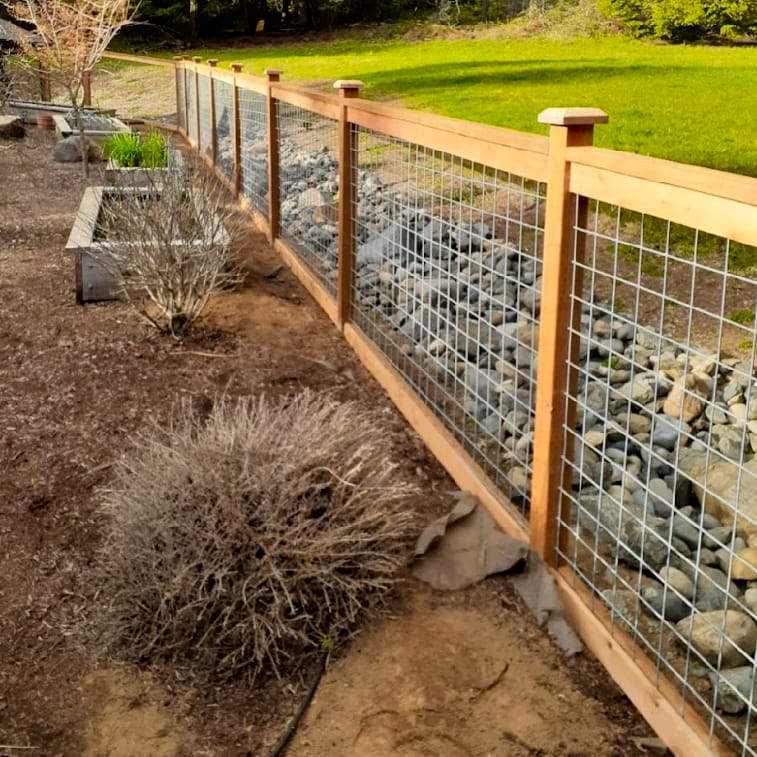All Categories
Featured

As home owners and organizations alike become much more ecologically aware, locating green and lasting secure fencing materials is a vital factor to consider. Whether you're wanting to build a fencing for privacy, safety, or aesthetic allure, choosing products that lessen your ecological footprint can aid shield the planet. In this post, we will certainly check out several environmentally friendly secure fencing alternatives, each offering distinct benefits for your home and the environment.
- Bamboo Fencing: A Renewable Energy. Bamboo is commonly recognized as one of one of the most lasting and environment-friendly secure fencing products available today. As a grass as opposed to a tree, bamboo expands quickly and can reach complete maturation in simply 3 to 5 years, making it a very renewable energy.
Environmental Benefits: Bamboo soaks up much more carbon dioxide than lots of various other plants, assisting counter greenhouse gases. Furthermore, bamboo requires very little chemicals and plant foods, making it a much healthier option for the environment. Longevity: Appropriately dealt with bamboo is resistant to bugs and moisture, meaning it can hold up against the elements much better than various other timber choices. Visual Appeal: Bamboo offers a clean, modern-day appearance that functions well with numerous landscape design styles, from exotic gardens to contemporary city layouts. While bamboo secure fencing is resilient, it does need correct treatment to maintain its long life, such as regular cleaning and routine sealing.
- Recycled Timber Fence: Granting New Life to Old Materials. Recycled timber is an outstanding green choice for those who want the natural charm of timber fencing without contributing to deforestation. This product is commonly sourced from old structures, pallets, or other repurposed wood items, reducing the need for recently collected timber.

Ecological Benefits: Making use of reclaimed wood helps in reducing the demand to reduce down brand-new trees and can additionally stop important materials from winding up in land fills. Sturdiness: Relying on the kind of wood and therapy it obtains, recycled timber fences can be equally as resilient as brand-new timber, especially if preserved appropriately with sealants and weatherproofing. Visual Charm: Recycled wood fences carry a rustic appeal and can be discolored or painted to fit your personal style. The main factor to consider with recycled timber is its maintenance. Gradually, timber can become vulnerable to rot, insect damage, and weathering, so routine maintenance is necessary to expand the life of your fence.
- Steel Fencing: Recyclable and durable. Aluminum and steel fence, especially when sourced from recycled products, uses a solid, green alternative to standard wood secure fencing. These metals are 100% recyclable, suggesting they can be repurposed indefinitely without shedding high quality.

Ecological Advantages: Metals like aluminum and steel reduce the demand for new mining and basic material removal, both of which have considerable environmental influences. Additionally, recycling steels calls for much less power contrasted to producing new steel from basic materials. Sturdiness: Steel fences are exceptionally strong, immune to weathering, and call for little maintenance compared to wood options. Visual Charm: Metal fences can be created in streamlined, modern styles, or more conventional appearances, supplying adaptability for any type of home. While steel fences are low-maintenance and durable, they are not as reliable at offering privacy compared to wood or vinyl choices as a result of the rooms between the slats or bars.
- Living Fencings: Natural and Green. Living fences, made from dense hedges, shrubs, or trees, supply a natural and eco-friendly alternative to standard fence. Not only do they produce a privacy barrier, but they likewise add to the atmosphere by supporting wild animals and improving air quality.
Environmental Advantages: Living fences absorb co2, enhance soil quality, and offer environments for birds and various other wild animals. In addition, they decrease sound pollution and enhance air top quality by filtering pollutants. Longevity: While living fences call for more maintenance than other materials (e.g., trimming, watering), they can be exceptionally durable if effectively maintained. Visual Allure: Living fences create a stunning, all-natural limit that enhances the landscape and uses a unique and natural look contrasted to standard fencing alternatives. The key drawback of living fences is that they require recurring maintenance and care, consisting of routine cutting and parasite control.
- Hemp Fence: Solid and Lasting. Hemp is a fast-growing and renewable plant that can be used to produce solid, eco-friendly fencing. Hemp secure fencing is made from all-natural hemp fibers, which are durable, biodegradable, and immune to pests.
Ecological Benefits: Hemp expands quickly and requires little water or chemicals. It also aids withdraw carbon, reducing greenhouse gases in the environment. Once the fence is no more required, hemp is naturally degradable and can be composted. Resilience: Hemp is naturally resistant to mold and mildew and parasites, which aids it endure various weather condition problems and prevent making use of severe chemicals. Sustainability: Hemp farming is much less resource-intensive contrasted to various other crops and assists maintain soil wellness through plant turning. Hemp fencings are a relatively brand-new option on the marketplace, and they may not be as extensively readily available as various other products. In addition, they may not be as generally made use of for high-security applications.
Final Thought: Pick Eco-Friendly Fencing for a Sustainable Future. There are lots of environmentally friendly fencing materials to take into consideration, each offering distinct advantages for your residential or commercial property and the atmosphere. Whether you pick bamboo, recycled timber, steel, living fencings, or hemp, each alternative permits you to create a functional and attractive limit while decreasing your ecological footprint. By selecting lasting products, you add to a greener future and support the expanding motion towards responsible building and construction and landscaping techniques.
Latest Posts
Explore Cost-Effective Auto Repairs with Montclare’s Limited-Time Service Specials
Published May 28, 25
1 min read
Explore WyHy FCU – Key Tools for Your Financial Success
Published May 26, 25
1 min read
Why Regular Auto Maintenance at Montclare Auto Repair Reduces Costs
Published May 25, 25
1 min read